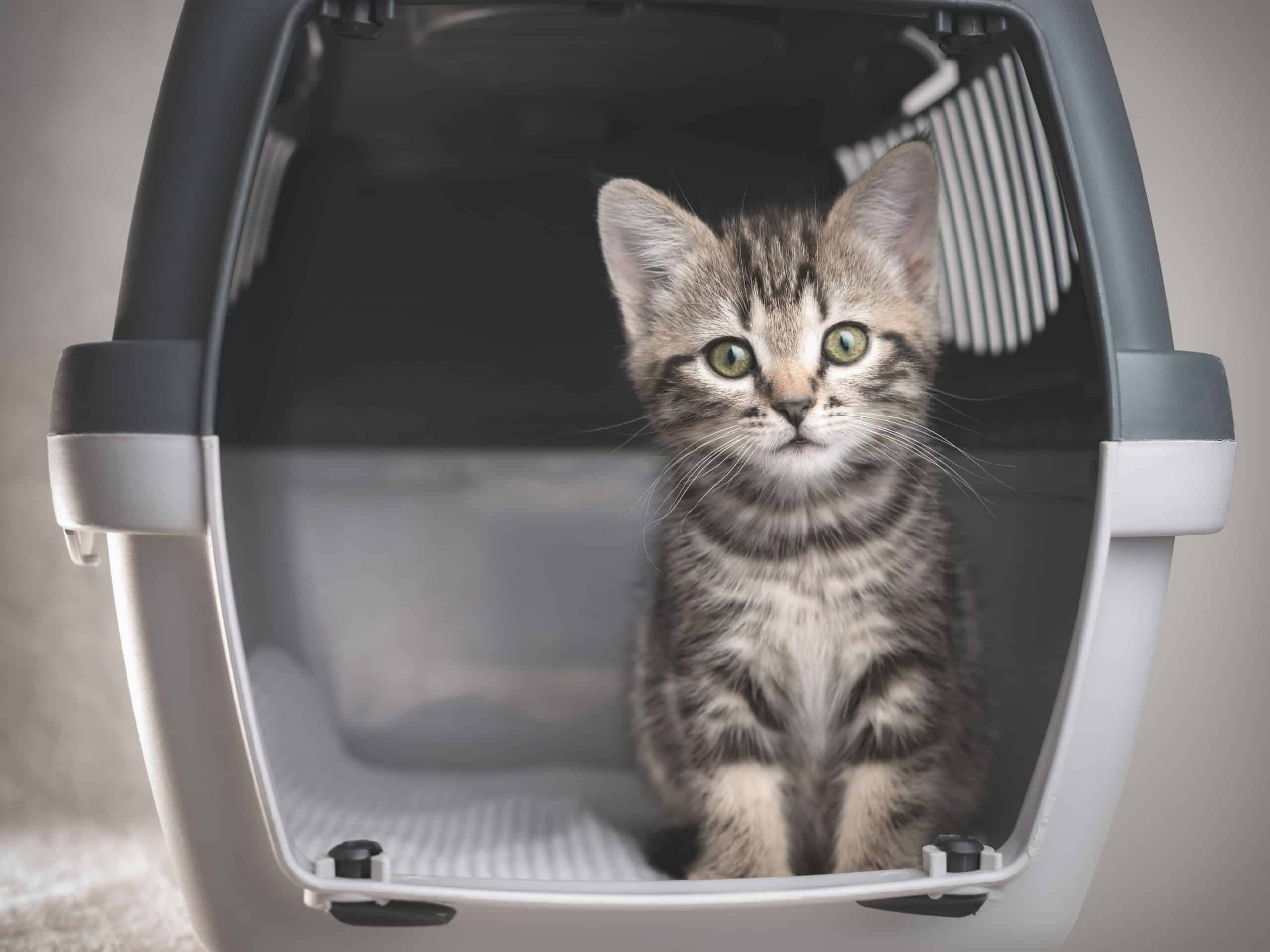Improve Your Cat’s Carrier, Increase Vet Visits

No cat owner wants to force their kitty into their travel crate, but sometimes it’s the only option. What’s amazing is that if you create a safe haven for them inside their carrier, and give them time to adjust to it, they will eventually prefer their special place of refuge. As an added bonus, you’ll be able to bring them in to see us more regularly, improving their overall health and wellness. Win-win!
Don’t Spring It On Them
There are many sizes and styles of cat carriers to choose from, and it’s a good idea to get a handle on your cat’s preferences. Suddenly displaying their carrier won’t win you any points—especially if they have already had a negative experience with it.
We recommend a gradual transition. To start with, detach the bottom section of the carrier and fill it with soft pillows and blankets. Once you notice that your cat chooses to hang out there, you may begin to slowly add the top section and the door.
Remember, the process of crate training can take several months, and more if your cat has had a bad time inside one before. They may connect painful or traumatic experiences with the crate, so it’s critical to stay positive and patient.
Tips for Success
A few fantastic ways to lure your cat closer to their carrier include any combination of the following:
- Their favorite treats all in a row leading to a nice cozy pillow
- Their favorite textured pillow/blanket
- Cardboard boxes or sheets on the ground around the carrier create feelings of security and comfort
- Catnip-filled toys
- Fresh water
- Cat-friendly plants
- A sunny spot or one that is completely removed from the flow of household traffic or noise
- A location that is near a window or vantage point
Once they begin to investigate their carrier, try to positively reinforce the experience with lots of praise, snuggles or scratches, toys and treats.
Your Cat’s Carrier and Beyond
In most cases, cat owners have to drive with their cat to the vet. What happens if you’ve finally trained them to accept their carrier, but they still can’t tolerate the car trip?
Again, training is necessary. Once your cat’s carrier becomes their go-to relaxation zone, you can take short trips in the car together. They might be okay for short distances, but as you extend travel time they might show signs of stress. Positive reinforcement techniques go a long way with treats, praise, and consistency.
A Word About Routine Care
Cats are notoriously difficult to convince that the vet is good for them. That’s why we employ special handling techniques and feline-specific tactics to calm them down. When a cat has a good experience at the vet, and they enjoy being in their carrier, it can feel less daunting to schedule and keep routine wellness exams.
When we are able to examine your cat once or twice a year we can stay in front of any developing health problems. Early detection is key to an effective treatment plan. In other words, when we see kitty consistently, they have a better chance of staying healthy and by your side for longer.
As always, we hope you’ll call us at (704) 334-4684 with any questions or concerns.
